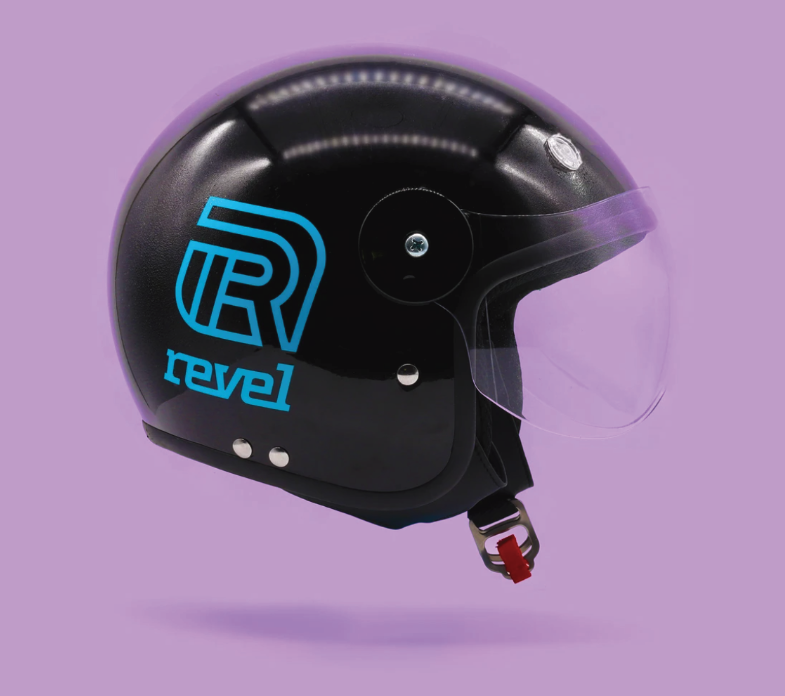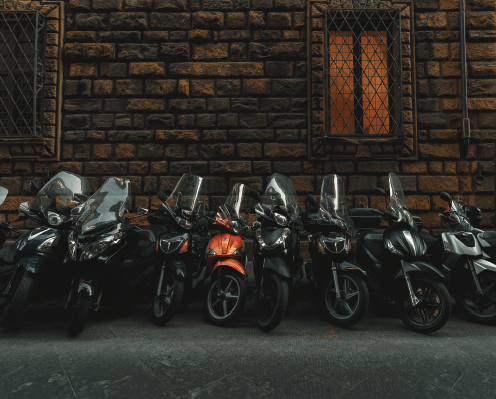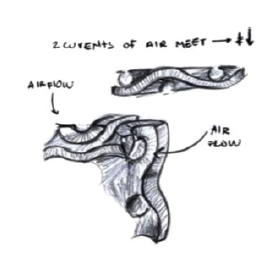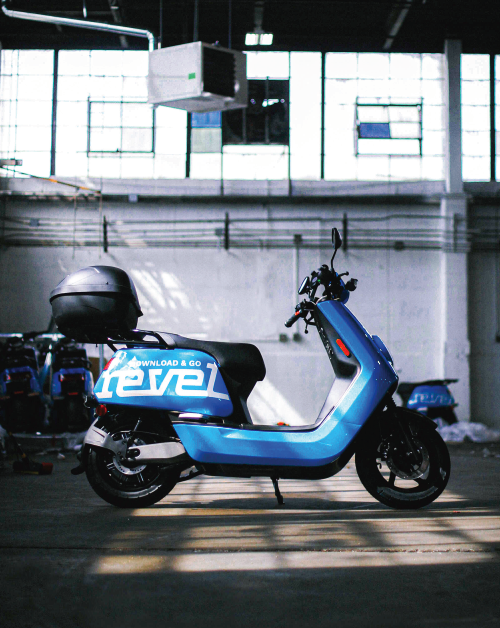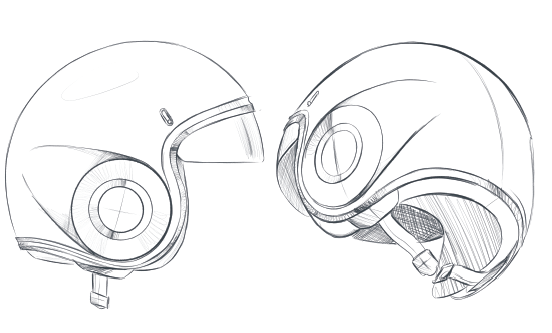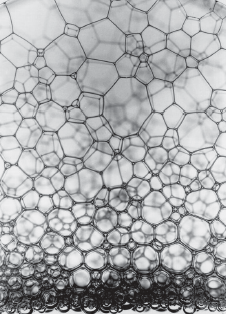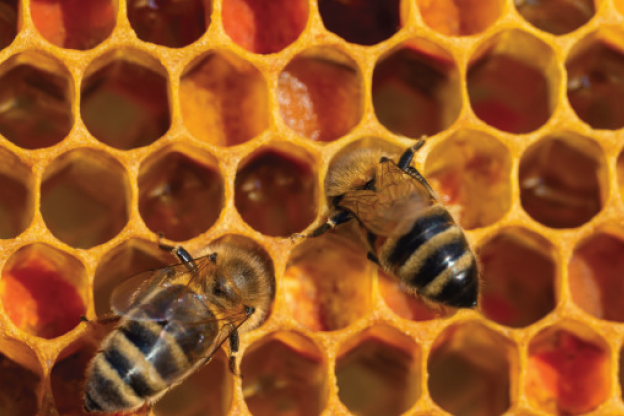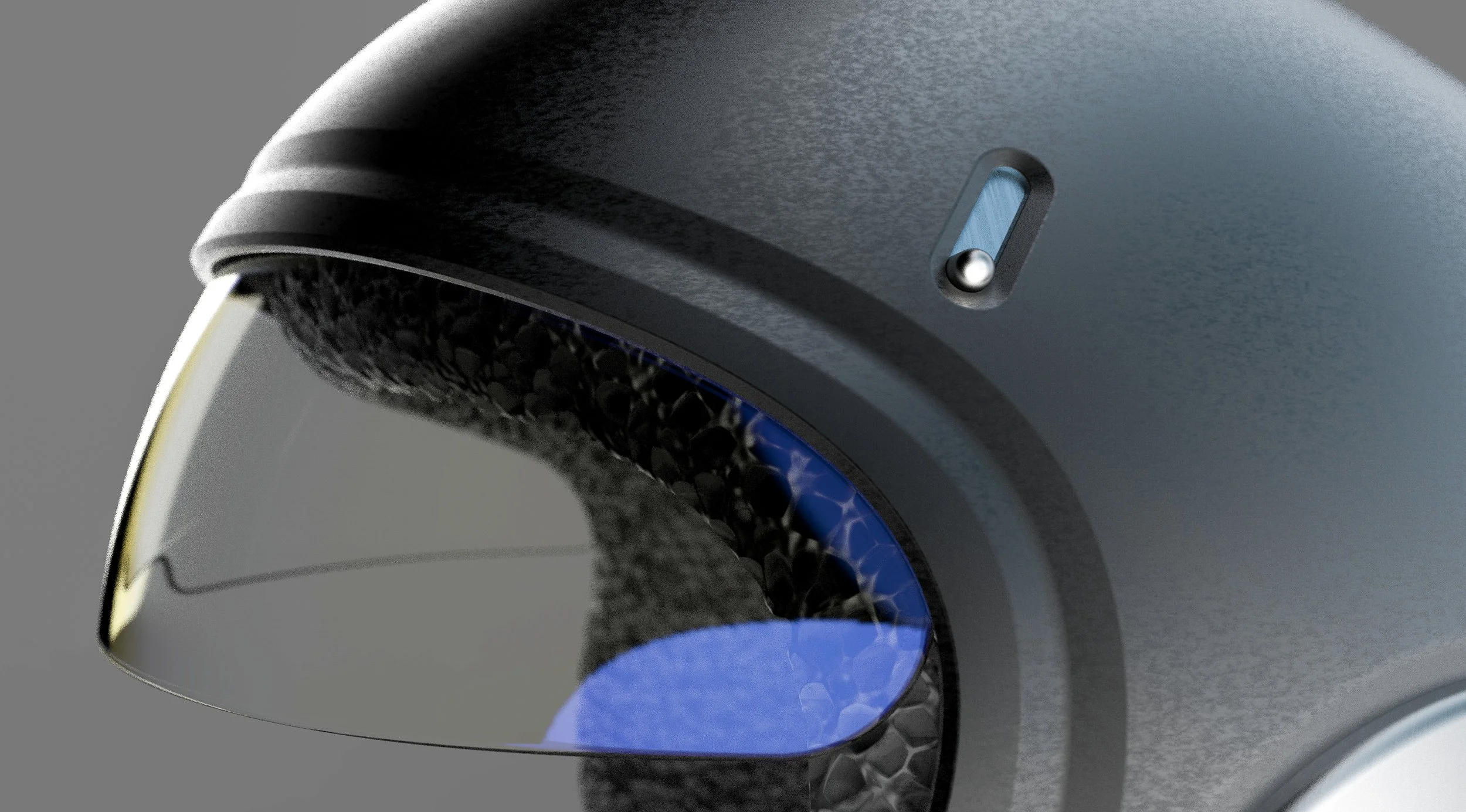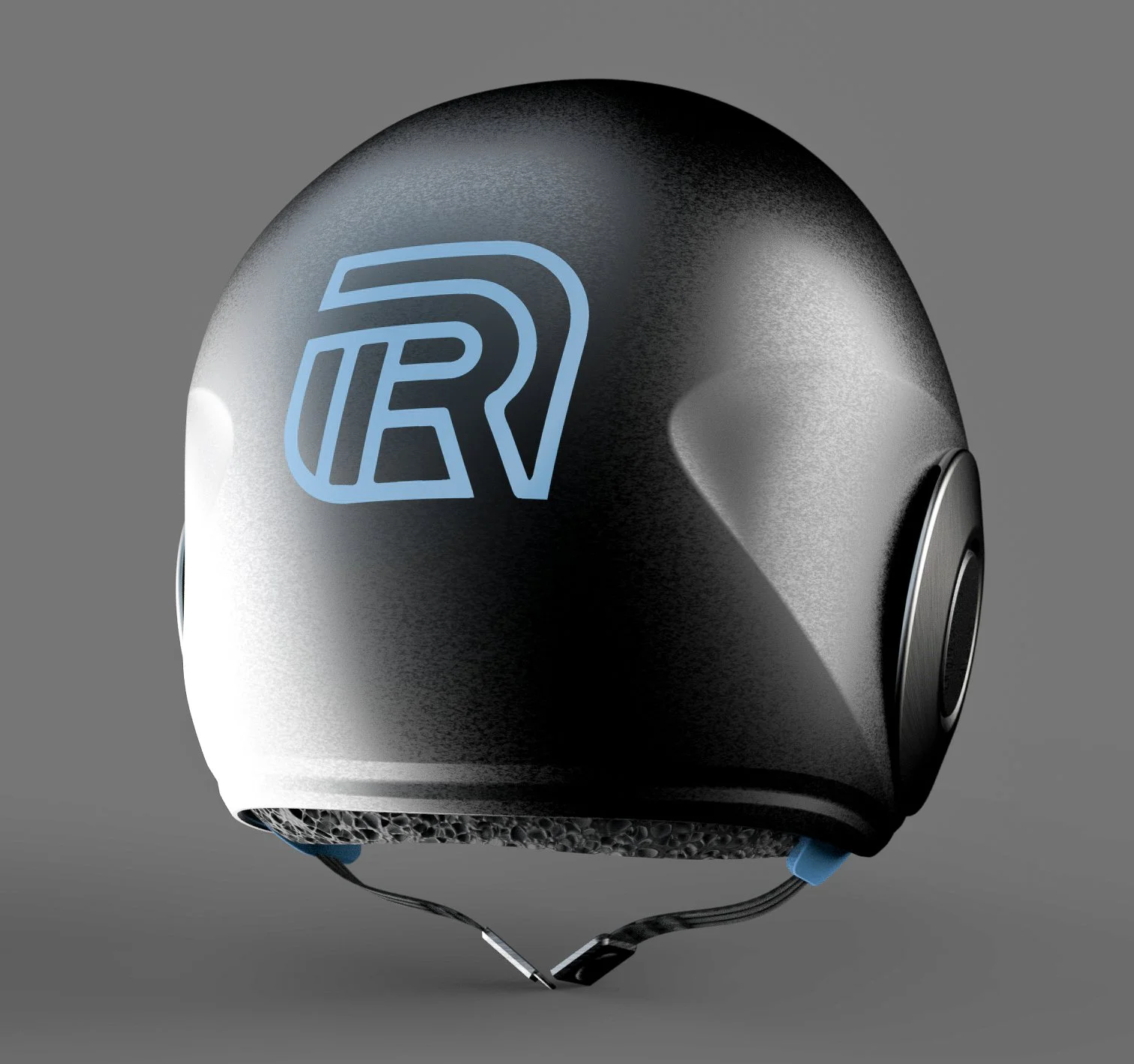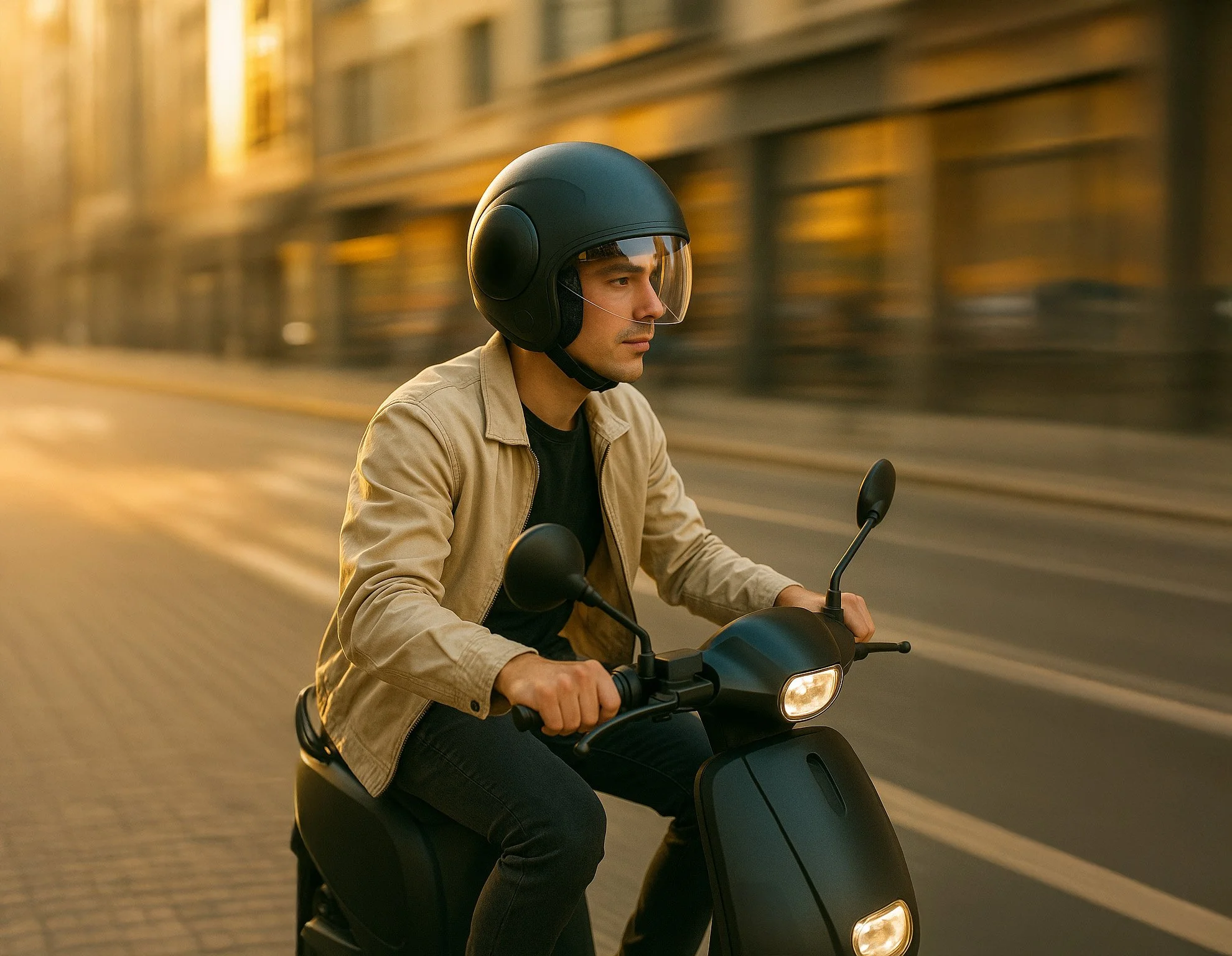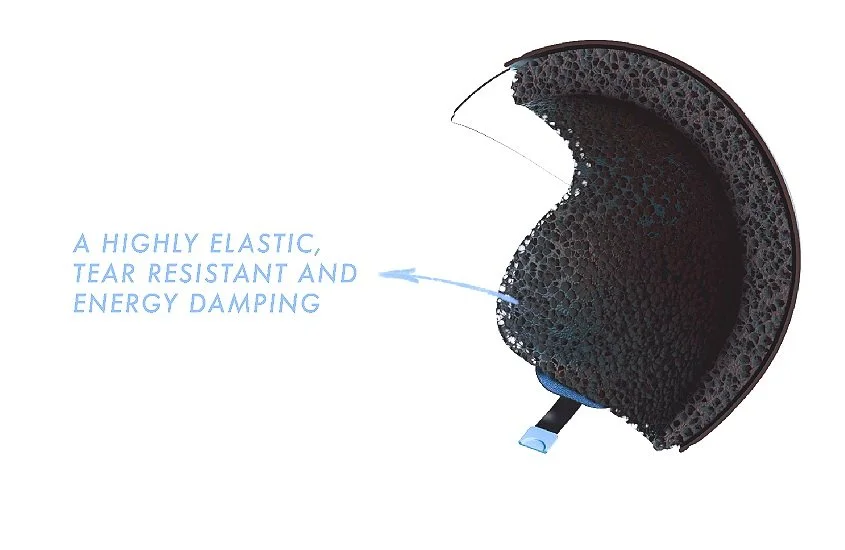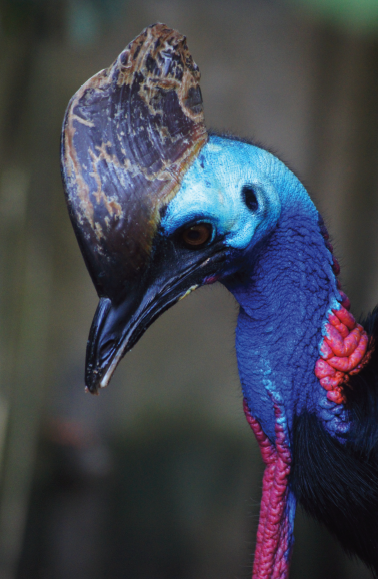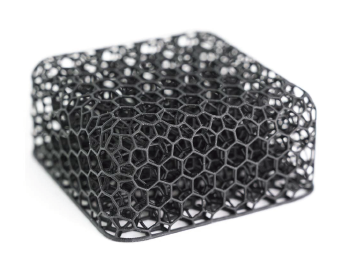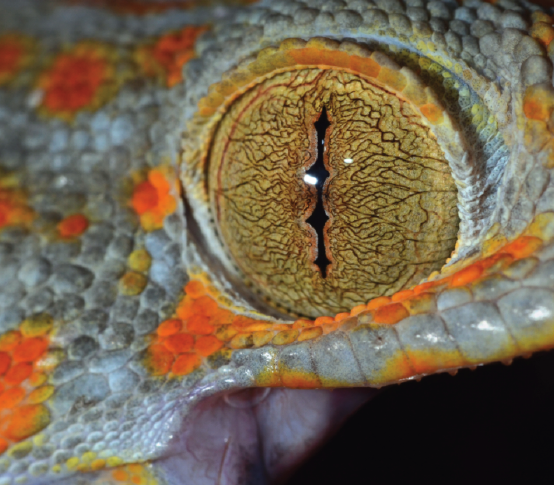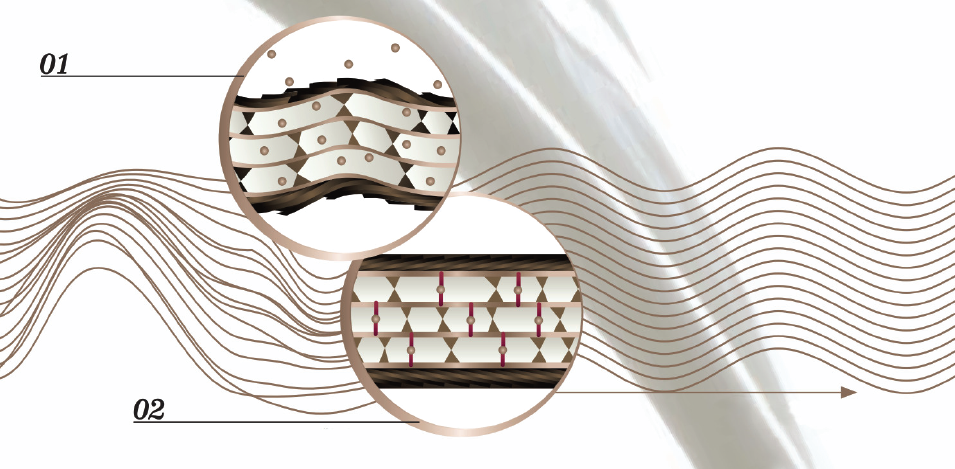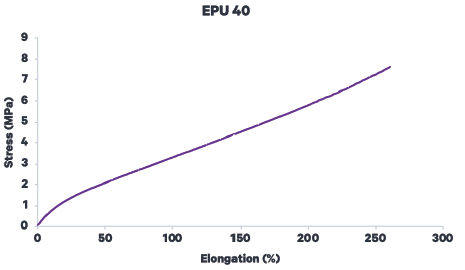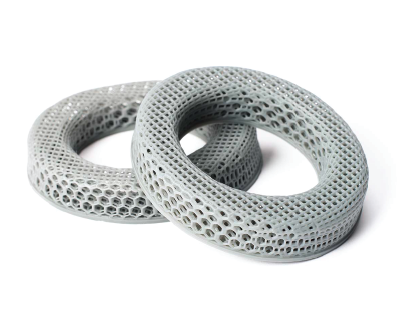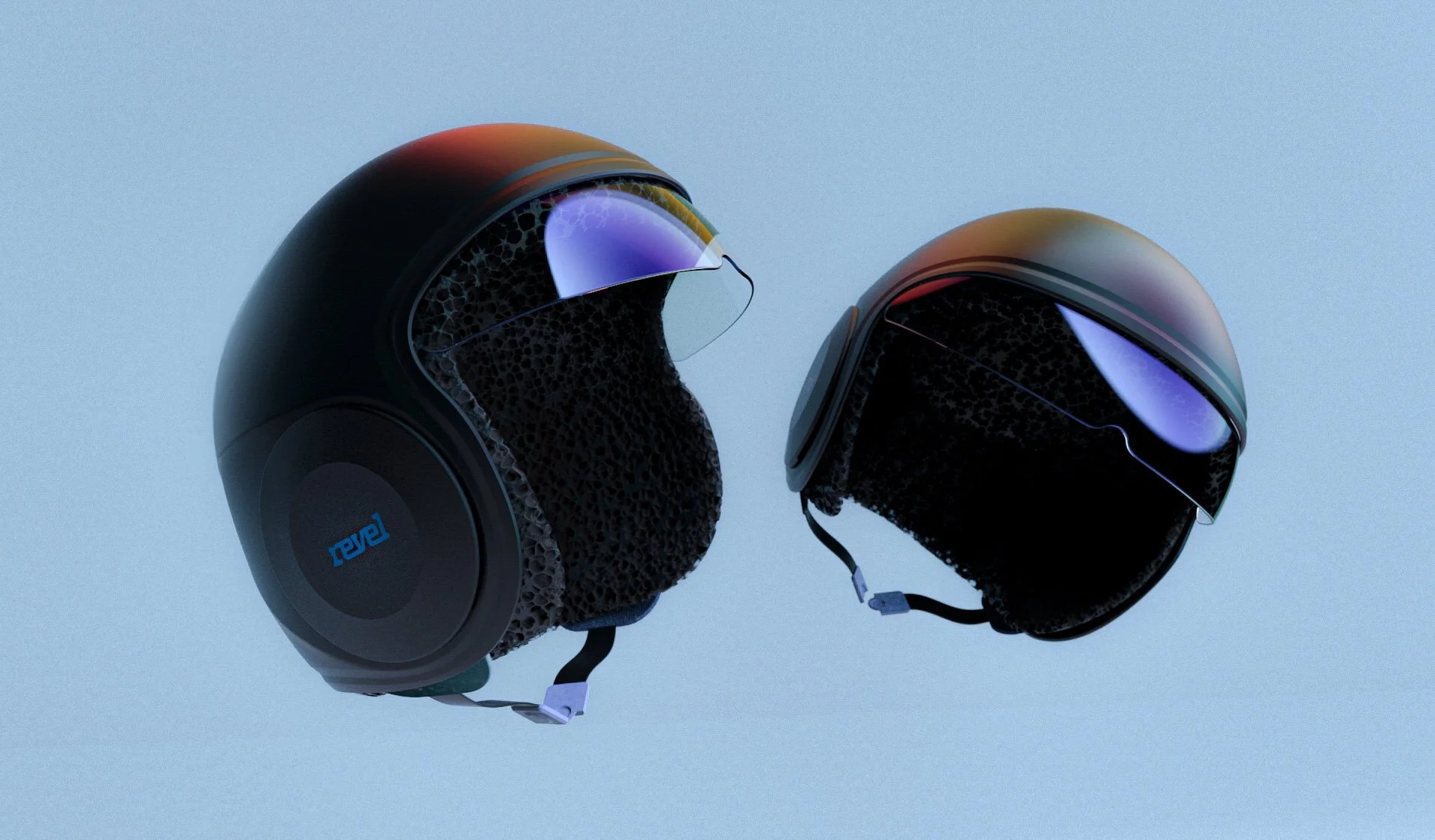biomimicry-revel
Pratt Institute Senior project Industrial Design. Professor. Ignacio Urbina
CONCEPT
As ride shares become a popular mode of transportation, it's important to ensure the safety of passengers while also addressing concerns about hygiene. That's why proposing a new helmet design for Revel that draws inspiration from natural structures and uses innovative geometry to improve airflow. The result is not only a safer ride but also a cleaner and more hygienic experience for users.
Due to the Covid-19 outbreak, the usage of mopeds in New York City has surged. As a trailblazer in ride-sharing services, Revel faces the daunting task of ensuring passenger safety. Unlike Europeans, Americans are relatively unfamiliar with mopeds, which has resulted in differing opinions about the product. While some have criticized Revel for providing an unsafe experience, the real issue lies with inexperienced users. Revel's objective has shifted towards educating this new group of riders to promote safer practices.
*Skills: Sketching Analytical research Biomimetics Creativiy / Critical Thinking
Challenges
The proposed project of designing a safer and cleaner helmet for Revel riders using biomimicry and advanced materials faces several challenges. Firstly, the cost of the helmet needs to be affordable for the users while ensuring optimal safety and comfort. Secondly, the learning curve involved in 3D printing the helmet using the chosen materials needs to be addressed. Additionally, extensive research on the structure and design of the helmet needs to be conducted, taking into consideration the unique head impact patterns observed in motorcycle accidents. Finally, the implementation of new policies and practices to encourage users to adopt the use of a clean helmet, such as taking a selfie before riding, may require a change in user behavior.
Biomimicry is important in material selection for the helmet as it allows for the use of natural and sustainable materials that provide strength, durability, and safety, similar to how animals and plants have evolved to develop their unique structures and properties.
*Skills: Sketching Rendering 3D modeling Prototyping Creativiy / Collaboration
proposal
The proposal is to create a safer and more eco-friendly helmet for Revel users. By incorporating biomimicry, it would aim to develop a helmet with a Voronoi pattern that enhances airflow and protects the head in the areas that need it the most, based on the study of concussions in moto accidents. The helmet will be made with materials such as chitosan and keratin, which are alternatives to plastic, and will include a visor with technology inspired by gecko eyes for enhanced vision in extreme light conditions.
old
new
Biomimicry allows us to learn from nature's designs and processes to create sustainable and efficient solutions. By mimicking the Voronoi pattern of bones and shells, we can enhance the airflow of the helmet, and by using chitosan and keratin, we can reduce the environmental impact of traditional plastic materials. The use of gecko-inspired technology for the visor allows for improved vision, while also reducing the need for additional materials and complex mechanisms. Overall, biomimicry enables us to design a helmet that is not only safer for riders but also sustainable and eco-friendly.
*Skills: Sketching Rendering 3D modeling Biomimicry Research Critical Thinking / Creativiy / Collaboration
In New York City, shared mopeds have become increasingly popular due to their convenience and cost-effectiveness. However, shared helmets can be a concern for public health, especially during the COVID-19 pandemic. By implementing the proposed helmet design with a Voronoi pattern, the airflow inside the helmet would be enhanced, reducing the risk of transmitting sickness or diseases between users. Additionally, the use of carbon-infused polymers would control bacteria and other harmful substances. The use of alternative materials like keratin and chitin instead of plastics also reduces the environmental impact of producing the helmet. Overall, the proposed helmet design offers a safer and more eco-friendly solution for shared moped riders in NYC.
Carbon manufacturing has employed the use of head scans and geometry optimization based on data on NFL concussions to produce their helmets. This same technology can be applied to the proposed project, utilizing data from motorcycle accidents to create an optimized geometry for the helmet.
The use of Voronoi geometry in the helmet's design allows for a more efficient and safer airflow, reducing the risk of overheating and increasing the wearer's comfort. The structure created by Voronoi patterns provides a good balance between structural strength and material efficiency. By printing the foam component using 3D printing technology, it allows for a more precise and customized fit for the wearer's head, providing better protection against concussions and other head injuries. Additionally, the use of a carbon-infused polymer in the foam and the chitochin-keratine shell provides additional safety and sanitation benefits by reducing the risk of bacterial growth and transmission of diseases.
Keratin is a naturally occurring protein that provides strength and rigidity to biological structures such as feathers, claws, and horns. It has been shown to possess mechanical properties comparable to those of some engineering materials. The use of keratin in the outer layer of the helmet can provide an eco-friendly alternative to traditional plastic. Additionally, by mimicking the structure of keratin found in the outer layer of the Cassowary's head, the helmet can be designed to better distribute impact forces, potentially increasing its protective capabilities.
Geckos have developed a unique ability to see in the dark by using a special layer of cells behind their retinas called the tapetum. This layer reflects incoming light back through the retina, giving the gecko a second chance to detect it. This concept has been applied in the development of the helmet's visor, which would utilize a similar reflective layer to improve visibility for the rider in low-light conditions. By studying and replicating the natural design of the gecko's eye, the helmet's visor can provide a safer and more effective solution for riders.
*Skills: Sketching Rendering 3D modeling Biomimicry Research Critical Thinking / Creativiy / Collaboration
The helmet has modular sides for potential future upgrades like navigation or safety alerts.

